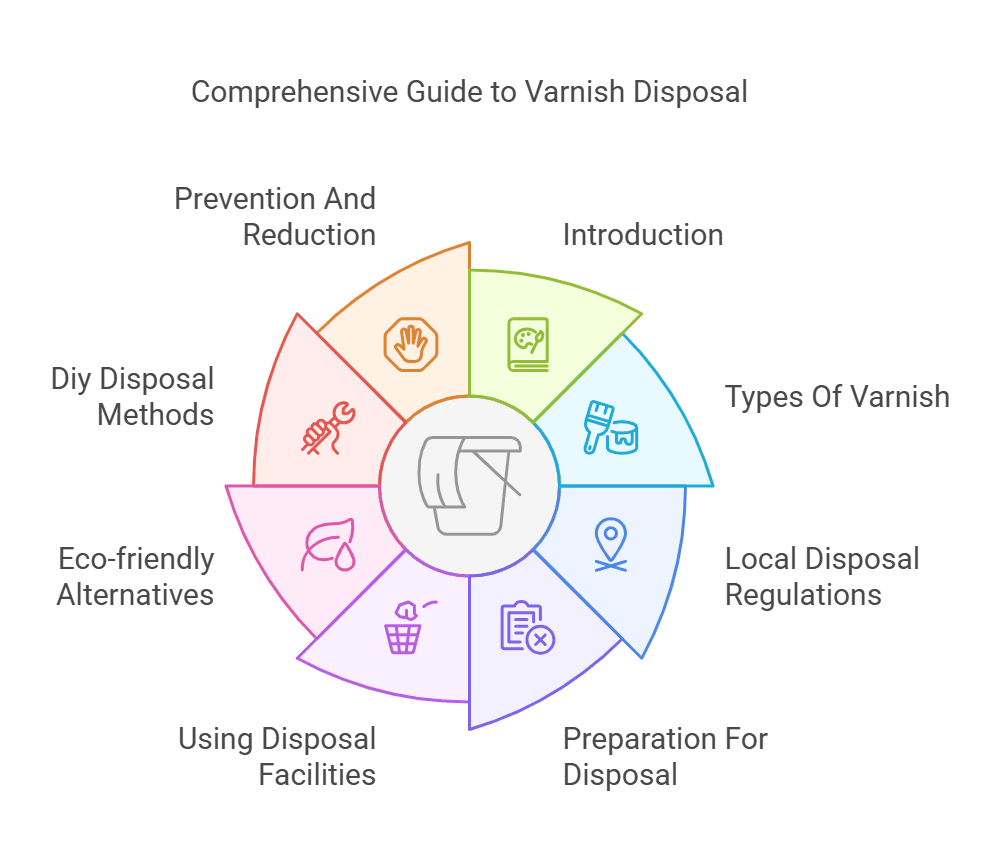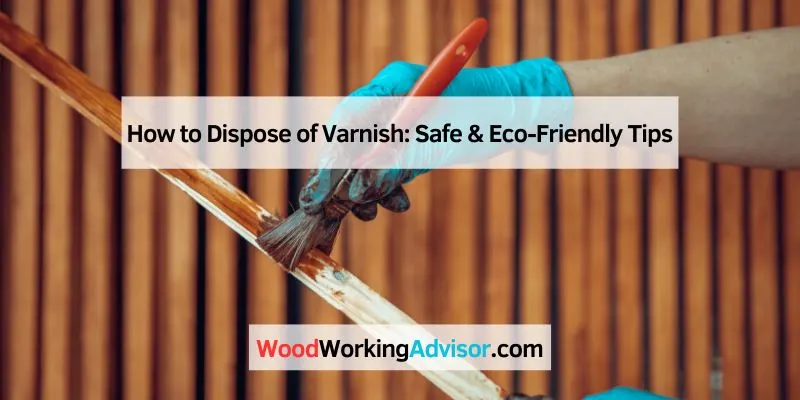To dispose of varnish, check local regulations for hazardous waste disposal. Place the varnish in a sealed container and take it to a designated facility.
Proper varnish disposal is essential for environmental safety. Varnish contains harmful chemicals that can pollute soil and water. Many communities offer specific guidelines for disposing of such hazardous materials. Ignoring these regulations can lead to legal consequences and damage to the ecosystem.
Always seek out local waste management services or hazardous waste collection events. Some areas may even provide drop-off points for household hazardous waste. Understanding the correct disposal methods helps keep the environment clean and safe. By following these steps, you contribute to a healthier planet and promote responsible waste management practices.
Introduction To Varnish Disposal
Proper disposal of varnish is very important. It helps protect the environment and human health. Improper disposal can lead to serious risks.
Varnish contains harmful chemicals. These can contaminate water sources and soil. This can harm plants, animals, and people.
Throwing varnish in the trash is not safe. It can release toxic fumes in landfills. These fumes can spread into the air we breathe.
Burning varnish is also dangerous. It can cause toxic smoke and create air pollution. Always follow local rules for varnish disposal.

Types Of Varnish
Oil-based varnish is a common type of varnish. It provides a strong, durable finish. This varnish takes longer to dry compared to others. Cleaning up requires solvents like mineral spirits. Always store it in a cool, dry place.
Water-based varnish is easier to use and dries quickly. It has less odor than oil-based types. Cleaning up is simple with just soap and water. This type is great for indoor projects. It also offers a clear finish that highlights wood grain.
Local Disposal Regulations
Disposing of varnish needs careful planning. Local regulations may vary greatly. Always check with your local waste management office. They provide important guidelines for safe disposal.
Some areas may require special drop-off sites. Others might allow curbside pickup. Research local laws online or call local authorities for help.
Understanding hazardous waste rules is essential. Varnish contains harmful chemicals. Improper disposal can harm the environment. Always follow the rules to keep your community safe.
| Type of Disposal | Requirements |
|---|---|
| Drop-off Sites | Check location and hours |
| Curbside Pickup | Confirm eligibility with local services |
| Recycling Programs | Ensure varnish is accepted |
Preparation For Disposal
Start by separating varnish types. There are oil-based and water-based varnishes. Each type requires different disposal methods.
Use separate containers for each type. Make sure they are sturdy and leak-proof. Label each container clearly. Write the type of varnish on the label.
Keep containers closed when not in use. This prevents spills and keeps fumes inside. Always store them in a cool, dry place.
| Varnish Type | Disposal Method |
|---|---|
| Oil-Based | Take to a hazardous waste facility |
| Water-Based | Dispose of in regular trash if dried |

Using Disposal Facilities
Disposing of varnish safely is important for the environment. Finding a hazardous waste facility is the first step. Check local government websites for locations. Many cities have special drop-off events.
Facilities usually accept varnish during specific hours. Prepare the varnish by sealing it tightly. Keep the original label on the container. This helps staff identify the contents quickly.
Some facilities may charge a fee. Call ahead to ask about costs and rules. Follow all safety instructions given by the facility staff. It ensures everyone’s safety during disposal.
Eco-friendly Alternatives
Recycling varnish helps protect the environment. Many communities offer special programs for varnish recycling. Check local waste management services for details. Some companies also accept varnish for recycling. Always follow local rules for proper disposal.
Unused varnish can be donated. Local schools and community centers may need varnish for projects. Art programs often appreciate donations of art supplies. Check with local charities to see if they accept varnish. This way, your varnish can help others.
DIY Disposal Methods
Solidifying varnish is a safe way to dispose of it. Use materials like sawdust, cat litter, or shredded paper. Mix them with the varnish in a container. Let it sit until it hardens completely. Once solidified, throw it away with your regular trash.
Homemade eco-friendly solutions can also help. Combine vinegar and baking soda to create a cleaning paste. This can clean surfaces before varnishing. Always wear gloves for safety. Make sure to keep the area well-ventilated.
To safely dispose of varnish, consider using local hazardous waste facilities. These centers know how to handle such materials properly. Check local guidelines to find the nearest facility.
Prevention And Reduction
Buying the right amount of varnish saves resources and reduces waste. Measure your project area carefully. Always choose a size that matches your needs. This helps avoid leftovers.
Proper storage techniques keep varnish fresh for future use. Store varnish in a cool, dry place. Make sure the lid is tightly sealed. Avoid areas with high temperatures or moisture.
Label containers with the date and type of varnish. This practice helps keep track of your supplies. Always check for any signs of spoilage before using stored varnish.

Frequently Asked Questions
How Should I Dispose Of Old Varnish?
To dispose of old varnish, check local regulations first. Many areas have hazardous waste collection days. You can also take it to a special disposal facility. Never pour varnish down the drain or throw it in the trash. Proper disposal protects the environment and public health.
Can I Throw Varnish In The Trash?
No, you should not throw varnish in the trash. Varnish contains chemicals that can be harmful. Improper disposal can lead to environmental contamination. Always follow your local disposal guidelines. This ensures safe handling and protects the ecosystem.
Is Varnish Considered Hazardous Waste?
Yes, varnish is considered hazardous waste due to its chemicals. It can release harmful fumes and pollutants. Proper disposal methods are crucial to prevent environmental damage. Always check your local regulations regarding hazardous materials. This helps in adhering to safety standards.
What Are Safe Varnish Disposal Methods?
Safe varnish disposal methods include taking it to hazardous waste sites. Some communities have special collection events for such materials. Alternatively, you can use it up by applying it to a project. Always avoid pouring it down the drain or mixing it with regular trash.
Conclusion
Disposing of varnish responsibly is essential for environmental safety. Always follow local regulations to ensure proper handling. Consider recycling options or taking it to hazardous waste facilities. Educating yourself on safe disposal methods protects both your health and the planet.
Make informed choices for a cleaner, greener future.

